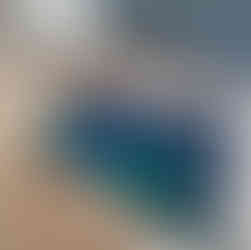Do this exercise progression for a strong, sexy butt...and it helps your spine!
- Ken Belveal
- Sep 16, 2021
- 3 min read
Updated: Sep 26, 2021

Anatomy of a muscle

The gluteus maximus is the largest muscle in the human body. It originates from the iliac crest and coccyx (tailbone) and inserts on the outside and top of the femur (thigh bone). It is responsible for hip extension, leg external rotation and decreases the arch in the small of the back. A strong gluteus maximus (glutes) helps with walking, standing, running, and protecting the low back by creating a stable platform and preventing anterior pelvic tilt – a condition in which the low back is arched more than it should be resulting in weak and tight low back muscles and causing low back pain.
The exercise
The glute bridge is an excellent way to work the buttocks and here is a progression of 10 exercises that will ensure you are challenged.
How to perform a bridge
Lie on your back with your knees bent 90 degrees
Your feet are between hip-width and shoulder-width apart and pointing straight forward
Claw your feet into the floor to produce an arch in the foot – think of an eagle clutching a fish – this will ensure that your feet do not collapse in
Engage your transverse abdominus by pulling your belly button to your spine
Squeeze your buttocks together and thrust them off the floor until there is a straight line between your shoulders and knees – if you cannot achieve this height you probably have tight hip flexors and should do one of these stretches first.
Hold at the top for a split second and slowly lower to right above the floor and repeat
Aim for 3 sets of between 8 – 15 repetitions performed 2 – 3 times a week
Once this can be achieved, move on to the next progression
The progression
Floor bridge arms across chest
2. Floor bridge on an unstable surface
3. Single leg floor bridge
4. Single leg floor bridge on an unstable surface
5. Ball bridge (upper back on ball) – when performing a ball bridge these
things need to be considered:
To get into the position, sit on the ball then walk forward allowing the ball to roll up the spine until it is shoulder blade height and the head is resting on the ball
Ankles should be placed under knees – the further away your feet are from your buttocks the more the hamstrings take over
Feet are hip-width to shoulder-width apart and pointing straight forward
Claw the floor with your feet
As the buttocks drop down, the head comes off the ball to keep spine in alignment
6. Ball bridge with feet on an unstable surface
7. Static ball bridge with trunk rotation
8. Dynamic ball bridge to trunk rotation
9. Resisted ball bridge (dumbbell in lap)
Ball bridge or hip thrusts work better than squats and deadlifts in targeting the buttocks.
Contreras, B., Vigotsky, A. D., Schoenfeld, B. J., Beardsley, C., & Cronin, J. (2015). A comparison of gluteus maximus, biceps femoris, and vastus lateralis electromyographic activity in the back squat and barbell hip thrust exercises. Journal of applied biomechanics, 31(6), 452-458.
Andersen, V., Fimland, M. S., Mo, D. A., Iversen, V. M., Vederhus, T., Hellebø, L. R. R., … & Saeterbakken, A. H. (2018). Electromyographic comparison of barbell deadlift, hex bar deadlift, and hip thrust exercises: a cross-over study. The Journal of Strength & Conditioning Research, 32(3), 587-593.
Delgado, J., Drinkwater, E. J., Banyard, H. G., Haff, G. G., & Nosaka, K. (2019). Comparison between back squat, Romanian deadlift, and barbell hip thrust for leg and hip muscle activities during hip extension. The Journal of Strength & Conditioning Research, 33(10), 2595-2601.
Tibbot, M., & Helm, K. (2020). Gluteal muscle activation during deadlift and barbell hip thrust.
By the time you get to the last progression you should have buns of steel!
Enjoy!
If you learned something from this blog post or found it interesting please like, share and consider joining our mailing list here.

















































Comments